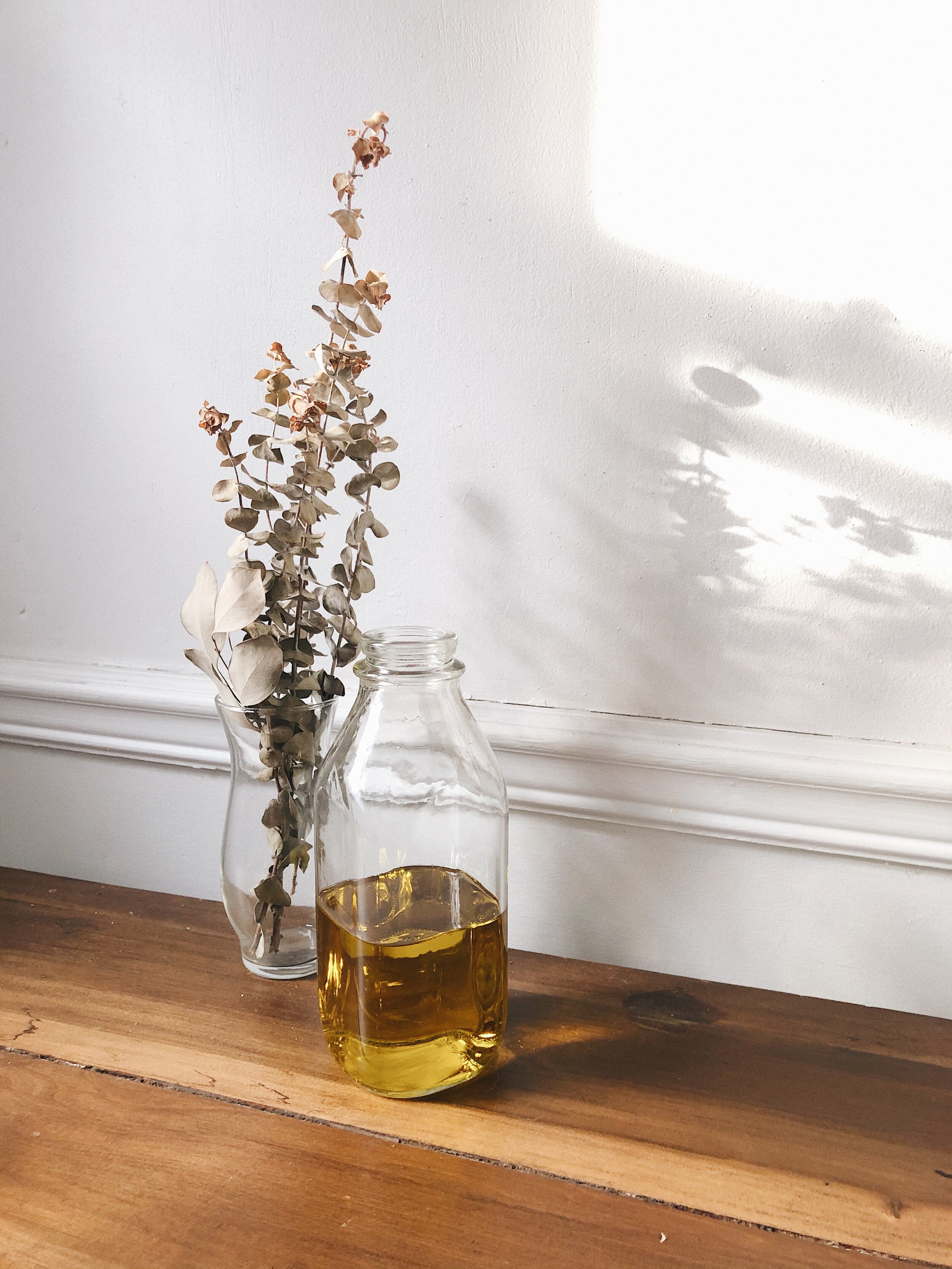
B L O G
Growing the Herb Garden of Your Dreams
Whether you’re adding fresh rosemary to your chicken recipe, or infusing your freshly squeezed lemonade with lavender, we’ve got all of the tips and tricks ready for you to start the herb garden of your DREAMS!
Do you love herbs? Well we do too! Herbs not only add delicious flavor to your favorite recipes, but they also have medicinal, homeopathic properties that your grandmother has been using for ages. Whether you’re adding fresh rosemary to your chicken recipe, or infusing your freshly squeezed lemonade with lavender, we’ve got all of the tips and tricks ready for you to start the herb garden of your dreams.
How to Choose Your Plants
Before choosing your herb garden plants, we recommend you start small, and then work your way up from there. Learn to “get the hang” of growing herbs before committing to a HUGE garden. Because herbs do have different needs than other plants, and while normally easier, they can sometimes take some getting use to.
Here is some info and a few examples of how we use our favorite herbs:
Rosemary: promotes increased concentration and digestion, but also a delicious addition to chicken.
Basil: known for it's use in italian cuisine (especially pesto), rich in antioxidants, and fast growing.
Mints: have many varieties. Can take over a garden, so they are best grown in containers. Also make great teas.
Oregano: is DELICIOUS when infused in honey or butter.
Lavender: is also great for teas. Also fun to make DIY lavender bath salts and candles.
Parsley: makes a fresh addition to salads and meats.
Perennial Options
If you’re wanting some perennial options (a plant that will remain more than one year) specific for our zones in North Carolina (6a-8a), here are some great options for you:
Catmint: cats LOVE this plant (if you don’t like cats, don’t plant this herb).
Also yummy as a tea.
Rosemary: (Rosmarinus Officinalis) looks beautiful and smells amazing. Can be used for not only culinary purposes, but also for decorations at Christmas.
Silver Thyme: has a pretty pink blossom in the summer with slight lemon-scented leaves.
Chives: grow back even bigger every year, and have a pretty purple flower.
Oregano: will return if you cut it back in the fall and cover with mulch.
Choose Your Pots (Or Beds)
If choosing pots, remember that the larger the pot, the larger the crop. For example, mint grows like CRAZY, so if you’re wanting a lot of mint, we recommend planting in a larger pot. If growing in the ground, keep in mind that some plants are more invasive than others, so protect the more delicate plants by keeping the invasive herbs away from them.
Use High Quality Soil
Start your herb garden out on the right foot by choosing a good quality soil. Daddy Pete’s Soil is a great organic option that we carry at our stores in North Carolina, which we mentioned here in this post. And remember, you are most likely going to be eating these herbs, so try and avoid spraying them with a chemical fertilizer. A great alternative to chemical fertilizer would be mixing in some compost to the soil when planting.
Watering Needs
Herbs are not like houseplants or succulents because they need a moderate amount of water every day, depending on the specific herb. And usually the best time to water is in the early morning, which allows the sun to dry the water from the leaves and prevent mold and mildew growth. Be careful not to overwater, as some herbs tend to gravitate toward root rot (like Sage).
Choose Your Location Wisely
Some herbs like a cool, shady spot, and some like a hot, sunny location, so remember to check the tag of your herb before planting. Another tip to keep in mind, in regard to location, is this: keep your herbs easily accessible. For example, you don’t want to be running through a summer rainstorm (or maybe you do) to go and cut the lavender from the garden that you forgot to get earlier that day.
Give It A Haircut… aka a pruning
We like to think of pruning herbs as “giving them haircuts”. If you trim the TOP of your herbs, more will grow back in its place, creating a full and healthier plant. You also want to cut from the top of your herbs, not the bottom. The bottom leaves are the sturdy base to your herb, so don’t cut those gorgeous leaves. And remember to trim often, because some herbs tend to die after blossoming like Cilantro. The leaves age, dry up, and fall off, leaving you with a twig and no leaves, which is sad and disappointing.
Do you enjoy planting herbs and using them in your recipes? If so, what’s your favorite herb and what recipe do you use them in? We’d love to hear about it in the comments below!
Please note: we truly hope you’ll come visit with us, and we would also love to see your gardening photos as well, so tag @gardenvalleyfarmersmarket in your posts, and don’t forget to use the hashtag #gardenvalleyfarmersmarket and show us your herbs!
And lastly, if you find this information helpful, we’d love it if you would support us by sharing with your friends.
Happy Herb Planting!
Thank you so much for joining us here. For more information on what Garden Valley Farmers Market is about, you can visit us here. If you’re wanting to visit with us, come by any of our five North Carolina locations. If you’re wanting to follow along with us, you can do so either on our Facebook, Youtube, or our Instagram. If you’re wanting to earn rewards and be easily connected with us, download our new App. And if you’re wanting to check out our other recipes and blog posts, or are needing more inspiration, follow us on our Pinterest. We’d love to have you join us in our journey of planting better, eating better, and living better.
Much love,
Your Garden Valley Farmers Market Team
Herb Infused Olive Oil
Want a super easy DIY to satisfy your cravings until Spring comes? Well, we’ve got the perfect solution for you: Herb Infused Olive Oil. You’re welcome. This oil recipe makes the perfect gift, is super easy to make (but looks like it’s not), and will bring so much flavor to your next dinner.
Want a super easy DIY to satisfy your cravings until Spring comes? Well, we’ve got the perfect solution for you: Herb Infused Olive Oil. You’re welcome. This oil recipe makes the perfect gift, is super easy to make (but looks like it’s not), and will bring so much flavor to your next dinner.
IMPORTANT: you want to make sure that you choose a high quality olive oil, as this is the main ingredient. Second, you want to make sure that you’ve prepared for everything to be completely dry- bottles, utensils, herbs, etc. If not, mold can settle, and that’s no bueno for your recipe.
You can use any herbs for this recipe that you want, and can even mix them, but for this recipe we will be using Rosemary. If you are using fresh herbs from your garden or pots, remember to dehydrate them before beginning. See below on how to do that. If you don’t have access to fresh herbs, you can always buy dried herbs from the store. But remember that we open up soon, and will have ALL the fresh smelling herbs ready for you!
Dehydrating your herbs:
Cut your herbs to the size you want them in the bottle
Wash any dirt off, then dry them with a paper towel
Line a baking sheet with parchment paper and place your sprigs on it
Set oven on lowest temperature and “cook” for about 1 ½ to 2 hours
How to Make Rosemary Infused Olive Oil
Add about 2 cups of your olive oil together with about 3 to 5 sprigs of Rosemary into your pot. Then heat over a medium temperature for about 5 minutes. Remove from heat and let your oil cool. Once your oil has cooled down, you can strain and store in a jar that allows you to close the lid tightly. You can even add a few sprigs of Rosemary to your jar for a pretty aesthetic. This oil will last for about 3 months and needs to be stored in the refrigerator, but with how easy it is to make, you’re probably going to be making more very soon anyways.
Rosemary Infused Olive Oil
Total time: 10 minutes
INGREDIENTS
2 Cups Olive Oil
5 Rosemary Sprigs
DIRECTIONS
1. Combine your oil and Rosemary sprigs into a pot
2. Heat over medium heat for about 5 minutes
3. Remove from heat and let cool
4. Strain oil into a jar with a tightly closed lid
5. Store in refrigerator for up to 3 months
Rosemary is a great herb that lasts all year long in central NC, so don’t forget to pick up one for yourself when we open, which will be VERY soon.
Thank you so much for joining us here. For more information on what Garden Valley Farmers Market is about, you can visit us here. If you’re wanting to visit with us, come by any of our five North Carolina locations. If you’re wanting to follow along with us, you can do so either on our Facebook, Youtube, or our Instagram. And if you’re wanting to check out our other recipes and blog posts, or are needing more inspiration, follow us on our Pinterest. We’d love to have you join us in our journey of planting better, eating better, and living better.
Much love,
Your Garden Valley Farmers Market Team

























